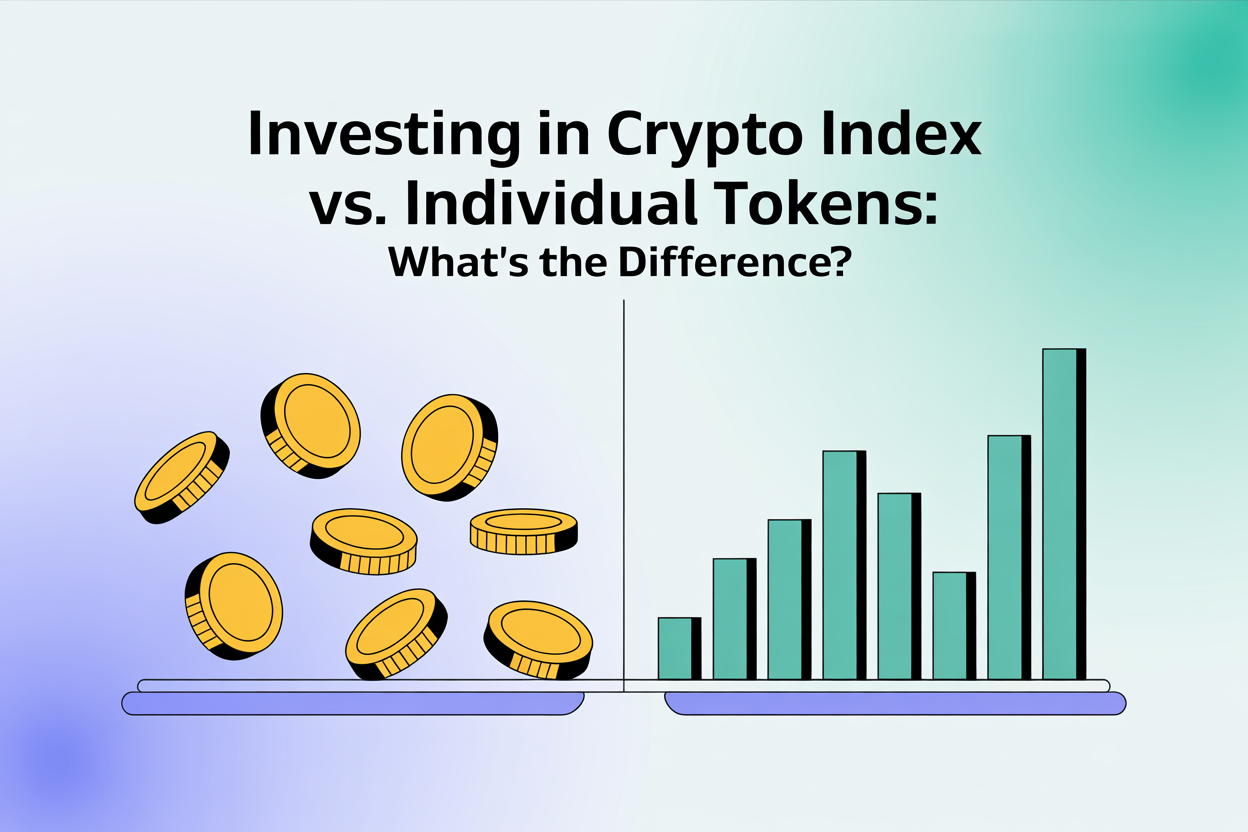Now Reading: Sustainable Blockchain: A Practical Guide
- 01
Sustainable Blockchain: A Practical Guide
Sustainable Blockchain: A Practical Guide

The world is getting more eco-aware, and the blockchain industry is too. As it expands, finding ways to make it greener is key.

This guide covers sustainable blockchain and why it matters today. We’ll look at what it is, its advantages, and efforts to lessen its environmental footprint.
Key Takeaways
- Understanding the concept of sustainable blockchain
- The importance of eco-friendly blockchain technology
- An overview of the guide’s objectives and scope
- The benefits of adopting sustainable blockchain practices
- Steps to reduce the environmental impact of blockchain technology
The Environmental Impact of Traditional Blockchain
Traditional blockchain systems have a big carbon footprint. This raises big questions about their future. As we move more online, the energy blockchain uses is a big deal. We need to understand how these systems affect our planet.
Energy Consumption of Proof-of-Work Systems
Proof-of-work (PoW) systems, like those used by Bitcoin, use a lot of energy. They need a lot of electricity to solve hard math problems. This leads to a lot of greenhouse gas emissions.
For example, Bitcoin’s energy use is as much as a small country’s every year.
Carbon Footprint Metrics of Major Blockchains
Big blockchains, especially those using PoW, have big carbon footprints. Studies show that Bitcoin mining alone causes a lot of carbon emissions. This shows we need environmentally friendly blockchain options.
There are efforts to make carbon-neutral blockchain tech. Some are looking at new ways to agree on transactions that use less energy. For more on green blockchain, check out Debut Infotech’s blog on blockchain.
Creating sustainable blockchain tech is key for the industry’s future. As people want eco-friendly options, green blockchain technologies will become more popular. This will help make our digital world more sustainable.
Understanding Sustainable Blockchain Technology
The move towards sustainable blockchain technology is a big step for cryptocurrency and blockchain. As the field expands, tackling environmental issues linked to traditional blockchain is key.
Definition and Core Principles
Sustainable blockchain tech uses blockchain networks that aim to cut down on environmental harm. It focuses on renewable energy, energy-saving consensus methods, and smart network designs. Green blockchain solutions work to lessen the carbon impact of mining and transactions.
- Renewable energy integration
- Efficient consensus algorithms
- Optimized network infrastructure
Benefits Beyond Environmental Considerations
Sustainable crypto technology brings more than just environmental gains. It also boosts security, encourages more people to use it, and might save money. By using sustainable blockchain solutions, developers can make blockchain apps stronger and more flexible.
- Enhanced security through robust consensus mechanisms
- Increased adoption and improved public perception
- Potential for lower operational costs
Alternative Consensus Mechanisms for Sustainability
The need for sustainable practices in blockchain is more pressing than ever. As the technology continues to evolve, it’s crucial to explore alternative consensus mechanisms that can significantly reduce environmental impact.
Proof-of-Stake vs. Proof-of-Work
One of the most significant shifts in consensus mechanisms is from Proof-of-Work (PoW) to Proof-of-Stake (PoS). PoW, used by cryptocurrencies like Bitcoin, requires massive computational power, leading to high energy consumption. In contrast, PoS achieves consensus by having validators “stake” their own cryptocurrency holdings, drastically reducing energy usage. For instance, Ethereum’s transition to PoS has been a significant step towards making its blockchain more eco-friendly.
- PoW: High energy consumption, high hardware requirements
- PoS: Lower energy consumption, lower hardware requirements
Emerging Green Consensus Algorithms
Beyond PoS, new consensus algorithms are being developed with sustainability in mind. These include Delegated Proof-of-Stake (DPoS), Proof-of-Capacity (PoC), and Proof-of-Authority (PoA). Each of these algorithms offers unique advantages in terms of energy efficiency and reduced environmental footprint. For example, PoC uses available disk space rather than computational power, significantly lowering energy consumption.

Energy Efficiency Comparisons
When comparing the energy efficiency of different consensus mechanisms, the differences are stark. A study on various blockchain networks revealed that PoS networks consume up to 99% less energy than PoW networks. To learn more about the environmental impact of blockchain, visit this resource on blockchain sustainability.
- PoW: High energy consumption
- PoS: Significantly lower energy consumption
- DPoS, PoC, PoA: Emerging algorithms with varying efficiencies
In conclusion, the shift towards more sustainable consensus mechanisms is crucial for the future of blockchain technology. By adopting eco-friendly blockchain technology and sustainable blockchain practices, we can mitigate the environmental impact and ensure a greener future for blockchain applications.
Evaluating Blockchain Platforms for Sustainability
The environmental impact of blockchain technology is a growing concern. It’s important to check if different blockchain networks are eco-friendly. As the industry grows, we need to look at how green each network is.
Top Eco-Friendly Blockchain Networks
Some blockchain platforms stand out for being sustainable. They use new ways to cut down their environmental impact.
Solana and Its Energy Efficiency
Solana is known for using less energy to validate transactions. This makes it a good choice for those looking for green blockchain solutions.
Algorand’s Carbon-Negative Approach
Algorand is working to be carbon-negative. It uses a special consensus mechanism and supports carbon offset projects. This makes Algorand a leader in environmentally friendly blockchain tech.
Tezos and Sustainable Governance
Tezos is special because it can update itself without big changes. This saves energy and makes Tezos more eco-friendly.
Sustainability Metrics and Benchmarks
To judge blockchain platforms, we need clear sustainability standards. These include energy use, carbon footprint, and renewable energy use. By comparing these, we can choose the most environmentally friendly blockchain options.
The need for green blockchain solutions is increasing. The industry must focus on developing eco-friendly tech and being open about sustainability.
Designing Energy-Efficient Smart Contracts
Creating energy-efficient smart contracts is key to lowering blockchain’s carbon footprint. As blockchain grows, so does its energy use. So, developers must make smart contracts that work well and are good for the planet.
Optimization Techniques for Lower Energy Usage
To cut down energy use, developers use several methods. These include gas optimization and smart data storage. These are vital for sustainable crypto technology.
Gas Optimization Strategies
Gas optimization means making smart contracts use less energy. This can be done by:
- Making operations simpler
- Storing less data
- Choosing better algorithms
Efficient Data Storage Patterns
Storing data in a smart way is key to saving energy. Developers can do this by:
- Using smaller data types
- Storing only what’s needed
- Compressing data
Code Examples and Best Practices
Let’s look at some code examples. For example, in Solidity, a top smart contract language, you can cut gas use by:
// Example of gas optimization in Solidity
pragma solidity ^0.8.0;
contract GasOptimized {
// Optimized function
function add(uint256 a, uint256 b) public pure returns (uint256) {
return a + b;
}
}
Best practices include keeping code up to date and efficient. Also, stay informed about ethical blockchain solutions. Joining developer groups helps share knowledge and learn from others.
By using these methods and following best practices, developers can greatly reduce their smart contracts’ energy use. This helps make the blockchain ecosystem more sustainable.
Implementing Carbon Offsetting in Blockchain Projects
Blockchain technology is growing, and carbon offsetting is key to making it carbon-neutral. This means balancing out the carbon emissions from blockchain networks by funding projects that cut down greenhouse gases elsewhere.
For blockchain projects that use a lot of energy, carbon offsetting is especially important. It helps them lessen their environmental harm and work towards a greener future.
Carbon Credit Integration Methods
One good way to add carbon offsetting to blockchain projects is by using carbon credits. These are like certificates for projects that lower greenhouse gas emissions. They can be traded on carbon markets. Here are some ways to mix carbon credits into blockchain projects:
- Tokenizing carbon credits: This means turning carbon credits into digital tokens for trading on blockchain platforms.
- Creating carbon credit marketplaces: Blockchain-based places can help with buying and selling carbon credits.
- Financing green projects: Carbon credits can fund projects like renewable energy.

Verification and Transparency Mechanisms
To make carbon offsetting work in blockchain projects, strong verification and transparency are needed. This includes:
- Regular audits: Doing audits often to check if carbon emissions data is right and if offsetting works.
- Clear reports: Sharing detailed reports on carbon emissions and offsetting to keep things open.
- Third-party checks: Getting third-party verifiers to check if carbon offsetting is done right and meets standards.
With these steps, blockchain projects can show they care about the planet and green blockchain solutions. This boosts their image and helps make the blockchain world more eco-friendly.
Building Sustainable Blockchain Applications: Step-by-Step Guide
Creating sustainable blockchain apps needs a detailed plan. This guide will show you how to make apps that are both new and green. We’ll cover the key steps to build blockchain solutions that are good for the planet.
Planning Phase: Sustainability Requirements
In the planning stage, setting sustainability goals is key. You need to think about how your app might affect the environment. Look at things like how it uses energy, stores data, and handles transactions.
Eco-friendly design principles should be part of your plan. This might mean choosing proof-of-stake over proof-of-work. Or finding other ways to use less energy.
Development Phase: Green Coding Practices
When you’re coding, making your app green is crucial. You want to use less energy and cut down on carbon emissions. This means writing code that’s efficient and doesn’t waste resources.
Efficient Algorithm Selection
Picking the right algorithms is important for saving energy. Look for ones that are light and use less power. For example, binary search is better than linear search for this.
Minimizing On-Chain Operations
Doing fewer things on the blockchain can help too. Use off-chain storage for data that doesn’t need to be on the blockchain. Also, make smart contracts do only what’s necessary.
Testing Phase: Energy Consumption Benchmarking
In testing, you need to check how much energy your app uses. Measure it in different situations to find ways to use less. Use energy consumption metrics to see how green your app is and make it better if needed.
By following this guide, developers can make sustainable blockchain applications. These apps use blockchain’s benefits while helping the environment.
Case Studies: Successful Sustainable Blockchain Implementations
The world is moving towards using blockchain in a way that’s good for the planet. This change is driven by laws and people wanting to help the environment. Companies are now using blockchain in a way that’s better for our planet.
Enterprise-Level Green Blockchain Solutions
Big companies are leading the way in using ethical blockchain solutions. IBM and Microsoft are great examples. They’ve created new blockchain projects that focus on being green.
IBM’s Energy-Efficient Hyperledger Projects
IBM is a leader in making blockchain energy-friendly through Hyperledger projects. They use permissioned blockchain to cut down on energy use. This lets big companies use blockchain without harming the environment too much.
Microsoft’s Carbon-Neutral Blockchain Initiatives
Microsoft is also making big steps in carbon-neutral blockchain. They use green energy and efficient blockchain methods. This helps reduce the environmental impact of their blockchain work.
Startup Success Stories in Eco-Friendly Blockchain
Startups are also important in making environmentally friendly blockchain solutions. Companies like Power Ledger and ClimateTrade help with renewable energy and carbon offsetting. They show that green blockchain can work well and grow.
These examples show blockchain can be both strong and good for the planet. As it keeps growing, we’ll see even more creative ways to use ethical blockchain solutions.
Tools and Resources for Measuring Blockchain Sustainability
Blockchain sustainability is now a big deal. Many resources help measure and reduce its environmental impact. As more people want sustainable crypto technology, developers are using special tools to check their blockchain’s green score.

Energy Consumption Calculators
Energy consumption calculators are key for knowing how much energy blockchain networks use. They help developers figure out how much energy their blockchain needs. For example, some calculators compare the energy use of different algorithms, helping developers choose the best green blockchain solutions.
Carbon Footprint Assessment Tools
Carbon footprint tools go beyond energy use by showing the actual carbon emissions from blockchain. They give a full picture of the environmental impact. This helps organizations find ways to be greener and adopt sustainable practices. With these tools, the blockchain world can become more eco-friendly.
The Regulatory Landscape for Sustainable Blockchain
Blockchain technology is growing fast, and rules are being made to help it grow in a green way. The push for a carbon-neutral blockchain is getting stronger. This is because governments and big groups around the world want to cut down on harm to the environment.
The rules for blockchain are complex and change a lot from place to place. But, more places are making rules that help sustainable blockchain practices.
Current and Upcoming Environmental Regulations
New rules are coming to lessen the harm blockchain does to the environment. For example, the European Union is planning rules to lower the carbon footprint of blockchain. These rules include:
- Energy use limits for blockchain networks
- Rules for blockchain projects to offset carbon
- Rules for being open about environmental impact
Compliance Strategies for Blockchain Developers
Blockchain developers can follow a few steps to meet new rules. These steps are:
- Using energy-saving ways like Proof-of-Stake
- Powering blockchain with green energy
- Buying carbon credits to balance out emissions
By keeping up with new rules and using green practices, blockchain developers can follow the law. They also help make the blockchain world better for our planet.
Overcoming Challenges in Sustainable Blockchain Adoption
The world is moving towards sustainable practices. This shift brings challenges to adopting eco-friendly blockchain technology. We need to tackle both technical and economic hurdles to make it widely accepted.
Technical Limitations and Solutions
Scalability and high energy use are big technical challenges. To solve these, new solutions like sharding and proof-of-stake are being explored.
- Sharding makes transactions faster by processing them in parallel.
- Proof-of-stake cuts down energy use by not needing mining.
Economic Viability Considerations
Another big challenge is making sustainable blockchain technology economically viable. The cost of eco-friendly solutions and finding incentives for adoption are major hurdles.
To boost economic viability, we can:
- Lower costs with energy-efficient hardware.
- Offer incentives for validators and users.
- Find affordable ways to scale.
By tackling these economic issues, we can speed up the adoption of green blockchain technology.
Future Trends in Eco-Friendly Blockchain Technology
The future of blockchain technology is closely tied to reducing its environmental impact. As it grows, we see a big move towards sustainable crypto technology and ethical blockchain solutions.
Emerging Innovations for Sustainability
Several new ideas are changing the blockchain world. These include:
- Advanced Proof-of-Stake methods that cut down energy use a lot.
- Layer 2 scaling solutions that make transactions faster and use less energy.
- More use of renewable energy sources to power blockchain.
Research Directions and Potential Breakthroughs
Research into sustainable blockchain is leading to new discoveries. Some key areas are:
- Creating quantum-resistant algorithms to lower the environmental impact of future blockchains.
- Looking into biodegradable cryptographic materials for blockchain hardware.
- Exploring blockchain-based carbon offsetting to tackle environmental issues.
These steps are moving the blockchain industry towards a greener future. They match global efforts to cut carbon emissions and support eco-friendly tech.
Community Engagement for Sustainable Blockchain Development
Creating a sustainable blockchain ecosystem needs a strong community effort. It involves developers, users, and stakeholders working together. This collaboration helps spread sustainable blockchain practices and makes the industry greener.
Building Awareness Among Developers
It’s key to teach developers about green blockchain solutions. Workshops, conferences, and online forums are great for sharing knowledge. This education helps move towards a greener blockchain world.
Key strategies for building awareness include:
- Organizing developer meetups and conferences focused on sustainable blockchain
- Creating online resources and tutorials on green blockchain development
- Encouraging collaboration between developers and industry experts
Creating User Demand for Green Solutions
User demand is vital for green blockchain adoption. Users can push for eco-friendly blockchain by choosing the right products. This demand encourages businesses to be more green.
Effective ways to create user demand include:
- Educating users about the environmental impact of traditional blockchain
- Promoting sustainable blockchain-based products and services
- Encouraging user feedback and participation in the development of green blockchain solutions
Transforming the Future: Your Role in Blockchain Sustainability
The journey to a greener blockchain is ongoing, and we all must join in. By learning about blockchain’s environmental effects and using eco-friendly tech, we can make blockchain carbon-neutral.
As we’ve seen, new ways to agree, smart contracts that use less energy, and carbon offsetting are key. These steps help make blockchain more sustainable.
Now, it’s time to act on what we’ve learned. Whether you’re coding, investing, or just interested in blockchain, you can help shape its future. Supporting and working on green blockchain projects can spark innovation and make the ecosystem more eco-friendly.
Together, we can change the blockchain world for the better. Let’s aim for a future where blockchain and green tech go together. This way, we can build a better world for all, using eco-friendly blockchain technology.
FAQ
What is sustainable blockchain technology?
Sustainable blockchain technology uses blockchain in ways that are good for the planet. It often uses green consensus methods, smart contracts that save energy, and carbon offsetting.
How does proof-of-stake differ from proof-of-work in terms of energy consumption?
Proof-of-stake uses much less energy than proof-of-work. It doesn’t need to solve hard math problems, which saves a lot of energy.
What are some examples of eco-friendly blockchain networks?
Networks like Solana, Algorand, and Tezos are eco-friendly. They use green consensus methods and practices to cut down their environmental impact.
How can developers optimize smart contracts for lower energy usage?
Developers can make smart contracts use less energy. They can do this by using gas optimization, efficient data storage, and reducing on-chain operations.
What is carbon offsetting in the context of blockchain projects?
Carbon offsetting in blockchain means making up for the emissions by investing in projects that reduce greenhouse gases. This is often done by buying carbon credits.
How can blockchain sustainability be measured?
You can measure blockchain sustainability with energy calculators and carbon footprint tools. These help evaluate how green a blockchain network or app is.
What are some current and upcoming environmental regulations affecting blockchain?
New rules are coming for blockchain. They’ll cover energy use, carbon emissions, and e-waste. These rules might make blockchain developers follow green standards.
How can community engagement promote sustainable blockchain development?
Community involvement helps make blockchain greener. It raises awareness, creates demand for eco-friendly solutions, and encourages the use of green tech.
What role do emerging innovations play in the future of eco-friendly blockchain technology?
New ideas and tech are key for a greener blockchain future. They’ll help make blockchain more sustainable and drive the industry towards eco-friendliness.

















